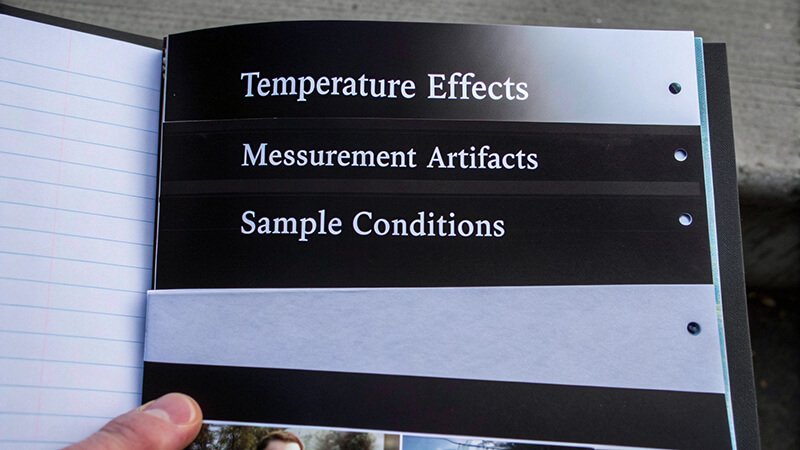Have you noticed your viscosity readings change when you adjust the RPM? This isn't a measurement error - it's a common phenomenon that affects many materials.
Viscosity variations at different RPMs occur mainly due to non-Newtonian fluid behavior. These fluids can show decreased viscosity (shear-thinning) or increased viscosity (shear-thickening) as RPM changes, depending on their internal structure.
At Martests, we encounter this question frequently from our distributors worldwide. I remember when Jacky, an Italian distributor, asked about this during the installation of our rotating spindle viscometer. Understanding these variations is crucial for accurate measurements and proper instrument selection.
Why Do Some Materials Show Lower Viscosity at Higher RPMs?
Many everyday materials become easier to stir as you mix them faster. This behavior, called shear-thinning, is the most common type of viscosity variation with RPM.
Shear-thinning occurs when a fluid's internal structure breaks down under increased shear force (higher RPMs). This breakdown reduces internal resistance, making the fluid flow more easily.
I often explain this to our customers using everyday examples like ketchup or paint. Think about ketchup in a bottle - it's thick when still but flows easily when shaken. This happens because higher shear forces break down its internal structure. In manufacturing settings, this behavior is crucial for processes like coating applications or material processing.
The science behind this involves complex molecular interactions. At rest, these materials have entangled molecular structures that resist flow. As RPM increases, these structures align or break apart, reducing resistance. This is why our viscometers show lower viscosity readings at higher RPMs for these materials.
From my experience working with various industries, this behavior is particularly important in:
- Paint and coating industries
- Food processing
- Pharmaceutical manufacturing
- Cosmetics production
Understanding shear-thinning helps our customers choose the right viscometer settings for their specific applications. When developing our viscometers at Martests, we ensure they can accurately measure across different RPM ranges to capture this behavior.
What Causes Some Materials to Thicken at Higher RPMs?
If you've ever mixed cornstarch and water, you've seen a material that gets harder to stir at higher speeds. This fascinating behavior is called shear-thickening.
Shear-thickening materials show increased viscosity at higher RPMs. This happens when faster mixing causes particles in the fluid to temporarily lock together, creating more resistance to flow.

At Martests, we've helped many customers measure this behavior in specialized materials like protective gear components and certain industrial slurries. The mechanism is quite different from shear-thinning:
- At low RPMs: Particles move freely past each other
- At higher RPMs: Particles jam together, forming temporary structures
- Result: Increased resistance to flow and higher viscosity readings
This behavior is less common but critically important in specific applications:
- Impact-resistant materials
- Specialized industrial processes
- Advanced protective equipment
- Certain ceramic processing applications
How Does Time Affect Viscosity at Different RPMs?
Sometimes, viscosity changes aren't just about RPM - time plays a crucial role too. This time-dependent behavior can significantly impact measurements.
Time-dependent viscosity changes include thixotropy (decreasing viscosity over time at constant RPM) and rheopexy (increasing viscosity over time at constant RPM). Both effects are reversible when shear stops.
Through our experience at Martests, we've learned that time-dependent effects require special attention during measurement. Here's what we typically observe:
Thixotropic materials (most common):
- Initially high viscosity
- Gradual decrease under constant shear
- Recovery when shear stops
Rheopectic materials (rare):
- Initially lower viscosity
- Gradual increase under constant shear
- Return to original state at rest
We've incorporated these insights into our viscometer designs, ensuring accurate measurements for both behaviors.
What Technical Factors Can Affect Viscosity Readings at Different RPMs?
Beyond material properties, technical factors can influence viscosity measurements at different RPMs. Understanding these is crucial for accurate results.
Technical factors affecting viscosity readings include temperature changes from shear heating, turbulent flow at high RPMs, and sample degradation. These can create apparent viscosity changes unrelated to the material's true properties.

In our manufacturing process at Martests, we consider several key technical aspects:
Temperature Effects:
- Higher RPMs can generate heat
- Temperature changes affect viscosity
- Temperature control is crucial
Measurement Artifacts:
- Turbulent flow at high RPMs
- Sample ejection
- Edge effects
Sample Conditions:
- Proper sample preparation
- Consistent testing procedures
- Regular calibration
We design our viscometers with these factors in mind, incorporating features like temperature control and appropriate measuring systems.
Conclusion
Viscosity variations with RPM stem from material properties, time-dependent effects, and technical factors. Understanding these helps ensure accurate measurements and proper instrument selection.


